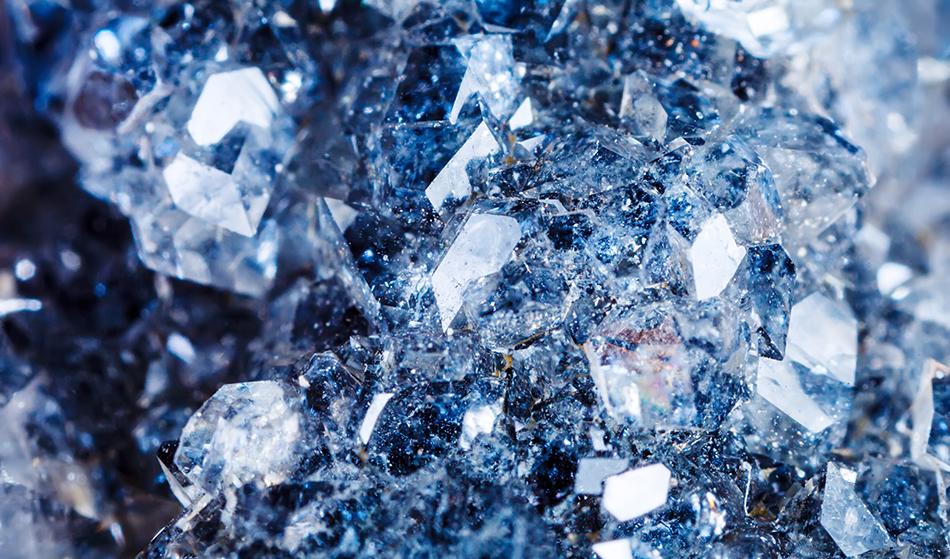
Nyura/Shutterstock
Infrared spectroscopy is a well-established technique for mineralogy investigation that requires little or no sample preparation. IR spectroscopy is often used when other techniques take too long or require the destruction of the sample. When it comes to the characterization of minerals in a sample, IR spectroscopy can provide a comprehensive overview.
IR mineralogical techniques can be applied to crystalline, non-crystalline, organic and inorganic materials. This approach allows for the qualitative investigation of a large range of specimens ranging from biological to clay minerals. Identification of unknowns is achievable through expert interpretation of spectra in conjunction with the usage of spectral libraries. Even though IR evaluation is mostly qualitative, quantitative work can also be done. Near-infrared spectroscopy (NIR) is a related process that allows for the quantification of various mineral characteristics in a wide range of materials, from food products to soil.
The IR spectrum generated by a mineral evaluation is the chemical fingerprint of the test sample. It is normally plotted as absorption against frequency. Translation of IR spectra is accomplished by using functional-group frequency tables, spectral database searches, and identification of absorption patterns based on experience. IR spectroscopy can be very helpful in the identification and description unknown specimens but requires special care to ensure spectral libraries are used correctly, particularly where spectra are derived from complicated mixtures.
Close evaluation of the spectrum from a sample is based on database spectra, but a strong match between test results and a library spectrum does not always mean a positive identification. All the bands from the sample ought to match the reference spectrum, not just a couple, for positive detection.
A Fourier transform infrared (FTIR) spectrometer is often used in a laboratory mineral analysis. Analysts may use a Diamond Attenuated Total Reflectance (DATR) holding accessory to enable specimens to be tested in their normal state and be recovered afterward. A Horizontal Attenuated Total Reflectance (HATR) accessory allows for the FTIR spectrometer to test mineral liquids and solutions.
FTIR microscopes have been used for everything from the identification of fibers to determination of chemical composition in biological thin films.
Use in Space-Based Research
Space-based spectrometers are becoming increasingly sensitive and researchers are using them to acquire precise mineral identification and mineral quantity values from mixed spectra. The spectra generated by these IR spectrometers are also compared to spectral libraries, which were produced under modeled conditions in terrestrial laboratories.
Comprehensive reports of mineral structures are most often conducted under ambient temperatures as it is experimentally convenient, especially far from Earth. However, temperature-dependent issues can considerably alter the behavior of various mineral species in a crystal lattice.
IR spectroscopy is often utilized due to researchers' current focus on hydrated minerals and IR’s level of sensitivity to the O-H bond, in addition to the relative simplicity of acquiring experimental data at temperatures both colder and warmer than ambient conditions.
IR spectroscopy is highly responsive to both mineral composition and species concentration. The latest developments in remote sensing and communications have heightened the usage of IR spectroscopy in non-ambient conditions. As a result, the low-temperature responses of hydroxyl (OH-) and molecular water (H2O) species have become essential to the search for hydrated minerals on extra-terrestrial surfaces. Researchers are particularly interested in the hydrated mineral inventory on asteroids because they can function as a tracer for major events taking place during the development of the solar system, and the moderate-temperature response of hydrated minerals is also relevant in the study of water traveling to the Earth’s interior from subduction zones.
Resources
Disclaimer: The views expressed here are those of the author expressed in their private capacity and do not necessarily represent the views of AZoM.com Limited T/A AZoNetwork the owner and operator of this website. This disclaimer forms part of the Terms and conditions of use of this website.